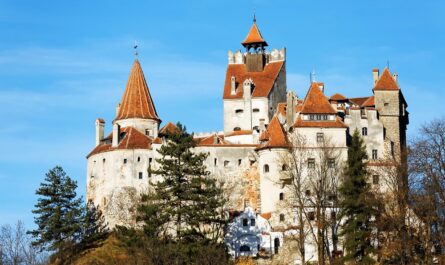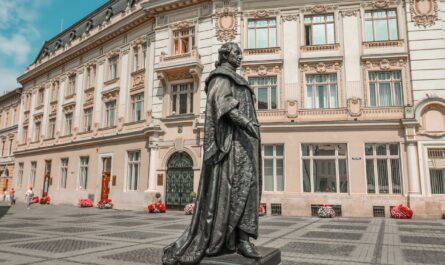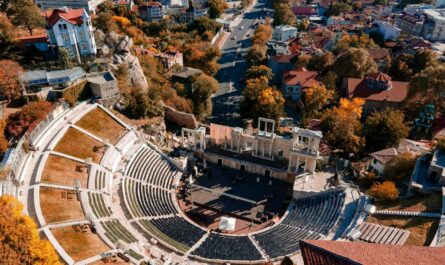Among the Carpathian Mountains of Romania lies Bran Castle that is very frequently romanticized in folklore as the residence of Count Dracula. Although the links between Bram Stoker’s vampire and Bran Castle is more based on fiction rather than having historical roots, the castle is a popular destination for travelers. Tourists are captivated to the castle’s gothic allure along with historic intrigue.
Here’s a guide to the rich history, architectural marvels and cultural importance of Bran Castle.
The Charm of Dracula’s Castle
The title ‘Dracula’ usually gives an image of darkened hallways, chambers along with shadowy figures that roam in the depths of the foreboding fortress. This gothic imagery is in accordance to Bram Stoker’s novel ‘Dracula,’ which was published in the year 1897. The novel defined the modern perception of vampires along with haunted and horror castles. Although Stoker’s novel is nothing more than fiction, visitors are often fascinated about the association of Bran Castle and literature.
Bran Castle sits atop of a 200-foot-high rock outcrop. It commands a dramatic and majestic view of the surrounding landscape. The castle’s positioning is defined as strategic and its architectural features give it the reputation of a medieval fortress.
Historical Concept of Bran Castle
Origin and History
Bran Castle’s origin goes all the way back to the 13th century. It was constructed by a Hungarian King named Andrew II in 1212. The main purpose of this castle was to use it as a defensive fortress owing to the strategically significant mountain pass against invading forces. The castle was intended to protect the Transylvanian region from threats like the Ottoman invasions and Mongol raids.
Late in the 14th century, the castle was given to the Saxons of Kronstadt by Louis I of Anjou. The Saxons were highly skilled craftsmen along with merchants. They were assigned with the task of fortifying the castle. As the centuries passed, the castle underwent multiple changes, experiencing modifications and expansions to suit the changing military and residential requirements.
The 19th and 20th Centuries
The interlink between the Dracula with Bran Castle actually gained traction in the late 19th and early part of 20th century. The castle was then purchased by Queen Marie hailing from Romania in 1920. This duration was considered as a duration of renovations. The castle was transformed into a royal residence. Queen Marie, who was prominent for her artistic taste along with a deep interest in Medieval history. She added numerous intricate details to the castle’s interior such as the exquisite furniture and one of a kind decorations.
Back during the World War II, the castle was used for multiple purposes such including hospital, treatment and refuge. After the war ended, Romania went through prominent political changes and the castle was converted into a museum. The castle was then deeply associated with Dracula due to its picturesque yet somewhat mysterious appearance.
Architectural Marvels of Bran Castle
Gothic Architecture
Bran Castle’s architecture is an embodiment of the quintessential elements of gothic design. It is marked by pointed arches, flying buttresses along with ribbed vaults. Despite the castle having undergone numerous changes over the centuries, its medieval touch remains intact. This is why the castle has a mysterious along with atmospheric appeal.
The castle’s façade also has a mixture of stone and timber elements. Its roofs are steep and tall. Moreover, the narrow windows provide it with a dramatic silhouette. The entrance is guarded and made highly appealing by a fortified gatehouse along with a drawbridge.
Interior Layout
The interior of Bran Castle has the classic medieval element however, it is also influenced by contemporary designing. The visitors who enter into this castle first get to witness the magnificent and grand entrance hall. The hall further leads to a series of interconnected rooms, such as a chapel, storage areas along with living quarters. In addition to this, the castle’s labyrinthine design features narrow staircases, passageways and secret chambers that adds to its enigmatic charm.
The rooms are also adorned with ornate woodwork and furniture that provides an insight into the opulent living style of Romania’s royal family.
The Tower and Secret Passageways
Among the most striking and intriguing features in the Bran Castle is its tower. It rises very prominently from the castle’s main building. The tower can be accessed through a winding staircase. The tower provides a gorgeous and panoramic scene of the surrounding landscape.
The secret passageways with in the castle that are usually concealed in the walls, have fueled love of Dracula. The hidden corridors were used for discreet movement. These passageways add to the castle’s allure.
The Dracula Connection: Fact vs. Fiction
The Modern Myth
Bran Castle and Dracula’s association has been perpetuated by popular traditions and tourist marketing. The castle’s appearance along with its association to the vampire lore makes it a prime attraction by those who are intrigued or interested by gothic fiction.




